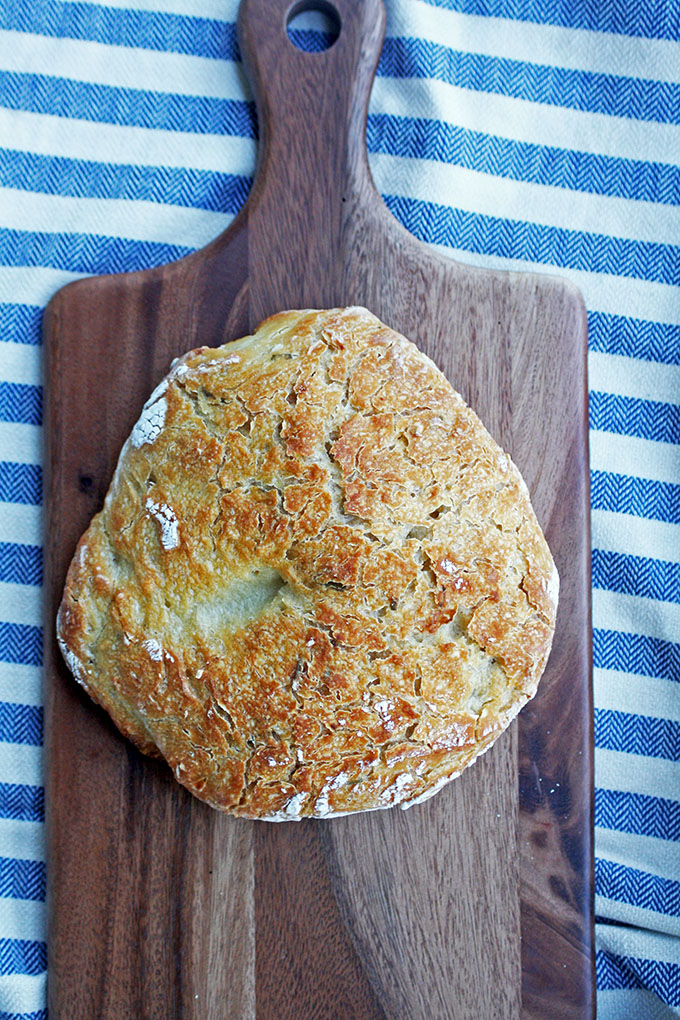No Knead Rosemary Lemon Garlic Parmesan Bread
Everyone always asks me what was the first thing I learned how to make. It was bread. I remember being about six years old and my god mother propping me up on her kitchen counter and teaching me how to make her famous rolls. I remember patiently waiting for the rolls to rise and asking her if " is it ready yet?"
I am a bread lover. I know it's probably for my waistline but everything in moderation is okay. I've had a craving for this rosemary bread that my local Whole Foods Market sells. I decided to save a few dollars and make it myself. Bread is so easy to make its just the patience it takes for it to be ready to be eaten.
I discovered this recipe from Williams Sonoma for a Rosemary Lemon no knead bread recipe. So yummy right? I decided to take this recipe to the next level by adding garlic and grated parmesan to the dough. This bread recipe is so aromatic each bite promises a new flavor. The outside has a crunchy layer and the inside is soft in the middle.
No Knead Rosemary Garlic Parmesan Bread
Ingredients
3 cups all-purpose flour
1/4 tsp. active dry yeast
1 3/4 tsp. salt
2 tsp. chopped fresh rosemary
2 tsp. chopped lemon zest
2 tsp. minced garlic
2 tsp. grated parmesan cheese
1 5/8 cup room tempature water
Directions
In a large bowl, combine the flour, yeast, salt, rosemary, lemon zest, garlic and parmesan cheese. Add 1 5/8 cups water and stir until blended; the dough will be shaggy and very sticky. Cover the bowl with plastic wrap. Let the dough rest at warm room temperature (about 70°F) until the surface is dotted with bubbles for about 12 to 18 hours or Turn on your oven about 30 minutes before you plan to start making the dough to about 300 degrees. Once it hits 300 degrees turn it off let it cool down to about 70 degrees, place the bowl in the oven to let the warm air help the bread rise overnight.
Place the dough on a lightly floured work surface. Sprinkle the dough with a little flour and fold the dough over onto itself once or twice. Cover loosely with plastic wrap and let rest for 15 minutes.
Using just enough flour to keep the dough from sticking to the work surface or your fingers, gently and quickly shape the dough into a ball. Cover with a cotton towel. Put the dough, seam side down, on the towel and dust with more flour . Cover with another cotton towel and let rise until the dough is more than double in size and does not readily spring back when poked with a finger, about 2 hours.
At least 30 minutes before the dough is ready, put your dutch pot in the oven and preheat the oven to 450°F.
Carefully remove the pot from the oven. Add a layer of parchment paper to the bottom. Slide your hand under the towel and turn the dough over, seam side up, into the pot. Cover with the lid and bake for 30 minutes. Uncover and continue baking until the loaf is browned, 15 to 20 minutes more.
Transfer the pot to a wire rack and let cool for 10 minutes
Makes one crusty 1 1/2-lb. loaf.



